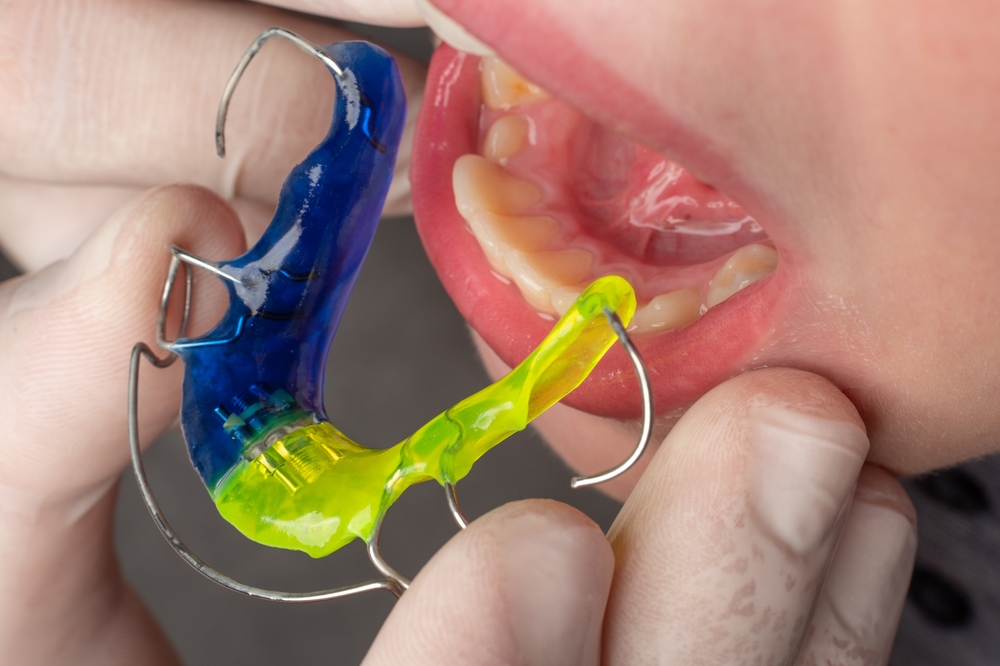
Types of Habit Breaking Appliances and Their Cost
Children often develop habits like thumb-sucking, tongue-thrusting, or teeth-grinding as a way to soothe themselves or find comfort. While these habits are natural, they can lead to dental issues if they persist in a child’s development.
Various habit-breaking appliances are available to address these habits and promote healthy oral development. In this informative blog, we will explore different types of habit-breaking appliances used in pediatric dentistry and discuss the factors that affect their cost.
Thumb-Sucking Appliances
Thumb-sucking is a common habit among young children, and while most kids naturally outgrow it, some may need assistance to break the habit. Thumb-sucking appliances, such as thumb cribs or thumb guards, are designed to discourage thumb-sucking by making it less pleasurable. These appliances are custom-fitted to a child’s mouth and are usually made of dental-grade materials.
Tongue Thrust Appliances
Tongue thrusting is a behaviour in which a child pushes their tongue forward against their front teeth when swallowing, speaking, or resting. Tongue thrust appliances help correct this behaviour by guiding the tongue into its proper position. These appliances are typically made from orthodontic materials and can be customized to fit each child’s unique needs.
Palatal Bars
Palatal bars are appliances used to prevent or treat oral habits like tongue-thrusting. They are designed to create a barrier between the tongue and the front teeth, encouraging the tongue to rest correctly. Palatal bars are custom-made to ensure a proper fit and effectiveness in addressing the habit.
Space Maintainers
Space maintainers are essential appliances used to preserve dental alignment when a primary tooth is lost prematurely. They prevent neighbouring teeth from shifting into the empty space, ensuring that there is enough room for the permanent tooth to erupt correctly. Space maintainers can be crucial in addressing habits that may lead to dental misalignment.
Tongue Crib
Similar to palatal bars, tongue cribs are used to deter tongue-thrusting and other tongue-related habits. These appliances feature a crib-like structure that prevents the tongue from pushing against the front teeth. Tongue cribs are tailored to the child’s mouth for optimal effectiveness.
Lip Bumpers
Lip-sucking habits can impact dental arch space and alignment. Lip bumpers are appliances designed to manage these habits by creating a separation between the lips and teeth. This helps maintain proper arch space and promotes healthier oral development.
Bite Plates
Bite plates are used to correct bite-related habits, such as thumb-sucking or tongue-thrusting, by altering the child’s bite. They are typically made of durable materials and customized to the child’s specific needs. Bite plates play a crucial role in addressing habits that may affect the alignment of teeth and jaws.
Orthodontic Retainers
Orthodontic retainers can also serve as habit-breaking appliances in some cases. These removable appliances are often used to maintain the position of teeth after orthodontic treatment. In certain situations, retainers can help address habits that affect tooth alignment and bite. The cost of retainers can vary depending on the type and complexity of the treatment.
Mouthguards for Teeth Grinding
Teeth grinding, or bruxism, is another common habit among children. Mouthguards, also known as nightguards, are used to protect the teeth from the damaging effects of grinding and clenching. While not specifically habit-breaking appliances, they can help address the habit by preventing tooth damage. The cost of mouthguards can vary depending on their material and customization.
Cost Factors
Several factors influence the cost of habit-breaking appliances:
- Materials: The type of materials used in the appliance significantly affects the cost. High-quality, durable materials may result in a higher upfront cost but can be more cost-effective in the long run.
- Customization: Custom-made appliances are tailored to the child’s specific needs and can be more effective. However, customization can increase the cost compared to standard appliances.
- Dental Professional Fees: The fees charged by the dental professional for assessments, fittings, and adjustments can contribute to the overall cost.
- Insurance Coverage: Dental insurance may cover a portion of the cost of habit-breaking appliances, reducing out-of-pocket expenses for parents.
Conclusion
Habit-breaking appliances are crucial in promoting healthy oral development in children and addressing habits that can lead to dental issues. While the cost of these appliances varies depending on factors like materials and customization, they are an investment in your child’s long-term oral health.
At Kids Dental Group (KDG), our experienced pediatric dentists specialize in providing comprehensive care for children, including using habit-breaking appliances.
Visit our Habit Breaking Appliances page to learn more about the services we offer and how we can help your child achieve a healthy, beautiful smile.
